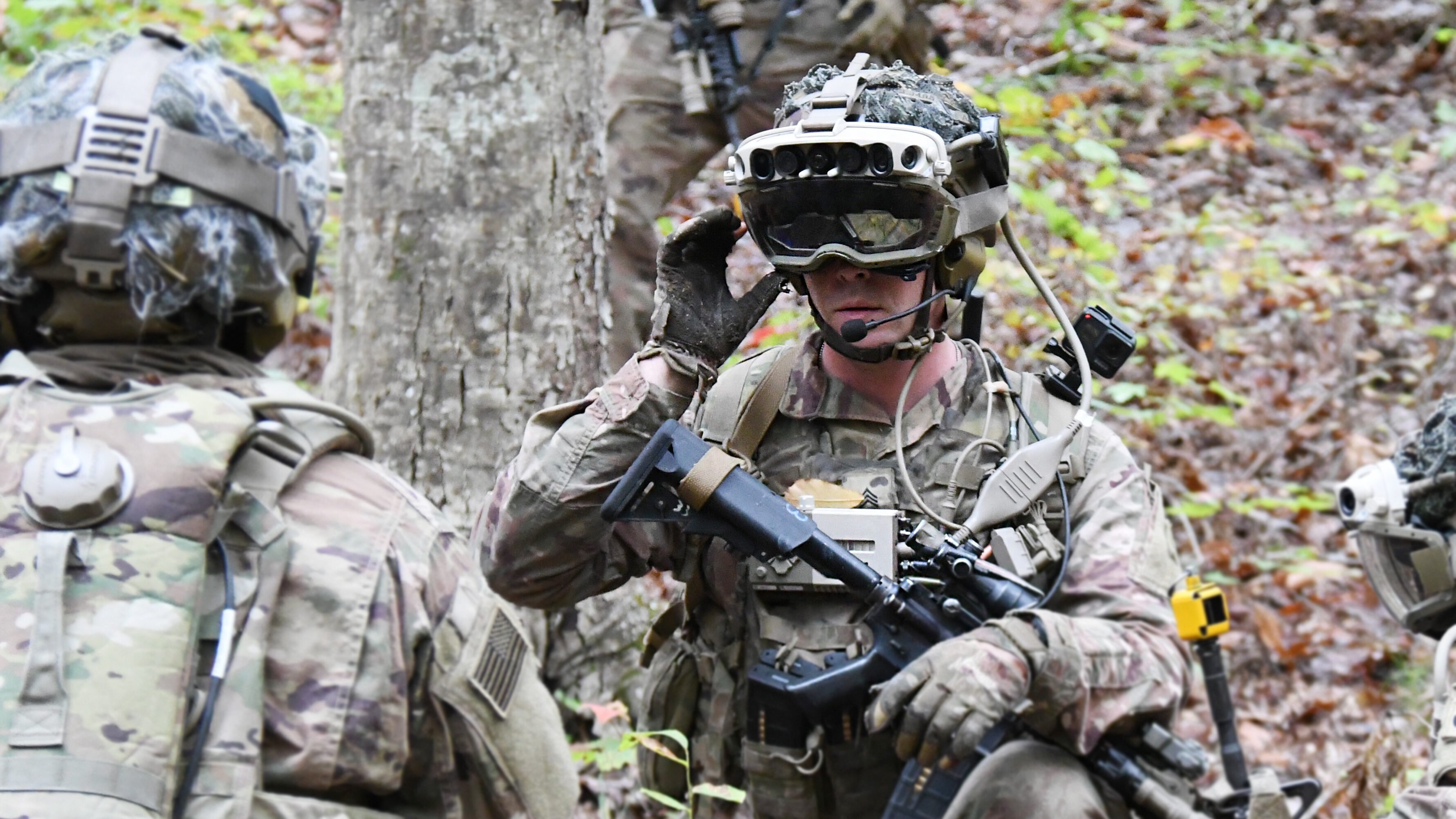
Soldiers test the latest, ruggedized version of the IVAS targeting goggles at Fort Picket in October 2020. (Army)
WASHINGTON: Top Army officials said today that the months-long delay in its highly touted, and high-dollar, Integrated Visual Augmentation System (IVAS) goggles was caused by technical difficulties encountered in the field.
A problem was discovered in the wider “field of view” provided by the goggles, which “pushed the boundaries of waveguide technology capabilities,” according to a new joint statement from Gen. John Murray, leader of Army Futures Command, and Karen Saunders, filling the role of the assistant secretary of the Army for acquisition, logistics and technology.
The IVAS goggles are supposed to provide soldiers with an 80-degree field-of-view, 40 degrees more than standard night-vision goggles, according to Army Times. But when stretching out to that peripheral vision, the goggles started to lose resolution, Murray and Saunders said. Janes first reported the challenges IVAS faced.
The two officials said that developers are “finding greater quality and clearer visibility” through “minor reductions.” The Army did not immediately provide details about the “minor reductions” to which the statement referred.
Last week, the service announced that the IVAS program’s operational test had been delayed from the fourth quarter of fiscal 2021 to May next year, delaying fielding to soldiers until Sept. 2022.
“The process will require a little more time, but it will still result in the fielding of a next-generation combat system six to 10 years ahead of the traditional acquisition program timelines,” the officials said.
Today’s statement emphasized that the Army “did not halt or stop the IVAS program, and remains committed to getting the best equipment in the hands of our Soldiers as quickly as possible.”
“The shift in the IVAS program will allow the Army and industry team to continue to enhance the IVAS technology platform, ensuring Soldiers achieve overmatch in multi-domain operations,” it said.
The IVAS program uses a militarized version of Microsoft’s HoloLens augmented reality glasses. The Army awarded the tech giant a five-year contract worth nearly $21.9 billion in March this year.
The Senate Appropriations Committee took note of the IVAS delay in its fiscal 2022 appropriations package and proposed a $778.9 million cut to department’s FY22 budget request for goggles’ procurement, calling it “ahead of need.” But the committee also proposed a transfer of $75 million to the program for research and development “to help the Army address any development shortfalls in fiscal year 2022.”
If IVAS is successfully fielded, soldiers will receive goggles that will provide a host of new capabilities, including a heads-up display showing tactical data, such as friendly units or objectives, as well as targeting cross-hairs linked to their weapon. The program is part of the service’s massive modernization effort as it looks toward future conflicts with more high-tech adversaries, such as Russia and China.
The Defense Department’s inspector general announced an audit of the IVAS program earlier this month to determine if the service was fielding equipment that would “meet capability requirements and user needs.”
In their joint statement, Saunders and Murray echoed statements made by Army leaders — including Murray himself — at the annual Association of the United States Army (AUSA) conference, calling for the service to take more risk in developing cutting-edge technology.
“You’re not going to see the breakthroughs if every bit of risk is baked out of everything we do from the very beginning. We’ll never be able to keep up with the pace of change,” Murray told Breaking Defense before the show.






















